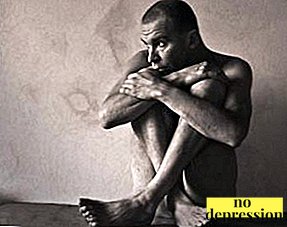The interaction of people in society always leads to certain social processes, phenomena.
Data elements of public life classified according to their inherent characteristics.
What it is: concept

Social process - This is a significant change in public life, carried out by groups of people to meet their interests.
Since society consists of many different groups, there are constant collisions of views and opinions in it.
This leads to continuous change in all areas of interaction between people.
A society cannot exist without social processes, since its full-fledged development and functioning are constant changes and transformations.
The emergence of social phenomena
Social process important to distinguish from social phenomenon.
Social phenomenon - this is an established aspect of social life, which was formed under the influence of previously existing interactions between people and continues to function on the basis of existing interactions at the given moment.
In contrast to the process, which has a clearly defined temporary nature (it is happening at the present moment of time), the phenomenon is stable and stable.

Reasons for classification:
- inherent to large groups: national psychology, class psychology, religious views;
- inherent to small groups: political views, interpersonal relationships, group attitudes and opinions;
- rational: views, norms, ideas, values, traditions;
- emotional: feelings, mood, atmosphere and climate;
- on stability: dynamic, static, relatively changeable;
- by mindfulness: conscious, unconscious.
Classification
Social processes are also divided into separate directions according to a number of criteria. Reasons for classification:
- on the object (organization, large group, small group, etc.);
- according to the degree of regulation (spontaneous, controlled);
- by orientation (progressive, regressive);
- by duration (short-term, long-term).
Views and examples

In social psychology, there are various kinds of processes and phenomena that exist in society.
The types of social phenomena include:
- main directions of public life (education, culture, political life, etc.);
- public institutions (religion, state, production);
- community groups (friendly company, team, family, fan club, sports team, etc.);
- relations between groups (cooperation, opposition);
- existing social order (collectivism, individualism);
- moral principles of society (approved and deprecated behavior);
- social needs, desires (in the house, in the profession, in recognition);
- state of society as a whole (the prevalence of pessimistic views, the rise of patriotism, revolutionary sentiments, etc.).
An example of a social phenomenon can serve as an elementary satisfaction by people of their biological nutritional needs.
Shopping trip for groceries - This is a social phenomenon. Many generations of people committed these actions and in the future people will also do it.

A sustainable element in the life of any society is religion.
It is expressed in the presence of people of faith, observance of rites and holidays, respect for religious symbols, etc.
At the same time in one society may be present immediately. several religious areas each of which will have the right to exist. Together they form a single phenomenon - religion.
Friendly company - This is a group of people united by common interests.
Between these people exist interactionswhich are based on the principles of commonality of views, unity of goals, the desire for mutual support and support.
Such phenomena are easily recognized by any member of society, as they have pronounced signs.
But there are also events that are hidden from public view. They exist in society, but due to some latency are not recognized by the majority of its members.
For example, anomie. This is a situation in which the society imperceptibly collapses the existing cultural basis, which leads to a decrease in the level of morality and ethics.

Another latent phenomenon is conformism.
When it happens, an absolute merging of an individual or an entire social group with the overwhelming majority occurs because of the desire to "be like everyone else."
As a result, there is a loss of individuality.
The main types of social processes:
- Cooperation. It implies the unification of people who seek together to achieve a common goal. With such cooperation, mutual assistance, trust, and interconnection take on particular importance.
People can do one activity together or perform different tasks that are interconnected. The cooperation benefits all participants.
Most often, this process can be observed in work collectives, but it is applicable to other types of relationships. For example, cooperation is the creation of a homeowners' partnership. Neighbors unite in an organized group to jointly resolve common housing issues. Together, they solve emerging domestic issues and achieve their goals.
- Competition. This is a struggle between individuals, groups for certain benefits. Competition can be quite conditional, and can be really aggressive. Everything depends on the degree of interest of participants in achieving their goals, in the limited benefits to which they aspire. Competition is a significant driving force of progress, since the desire to win stimulates the desire to constantly evolve, grow professionally and personally, and open new horizons. Virtually all social achievements are the result of free competition. So, competition is often used by managers in relation to their employees. Competitions for the best project, for the best idea are announced by the employer in order to obtain an optimal result. In such a situation, employees make maximum efforts to achieve the goal, since this will give them certain benefits - increase, bonus, etc.
- Device. Man seeks to do the same as others.
Adaptation can occur in the form of a search for a compromise, submission to the majority opinion, tolerance to the opinion of opponents.
So, if, when voting for a decision, the overwhelming majority of representatives of the social group of an individual express a unified position, then his demonstration of agreement with the rest with the actual opposite opinion is an adaptation.
- Conflict. If none of the participants of the interaction is not inferior to their positions and views, there is a clash of interests. This social process is always accompanied by serious emotional experiences of the parties, aggressive behavior. Conflicts can occur in all aspects of a person's life - between friends, spouses, relatives, colleagues, etc.
- Assimilation. The social process in which a certain group of people "dissolves" in the majority of the majority and adopts the rules of behavior and attitudes prevalent in the habitat of this majority. Assimilation is often bilateral in nature, because when new people enter the current environment, borrowing from "newbies" appeals to most traditions and customs.
A typical example of assimilation is the emigration of our country's citizens to other states. They gradually adopt a foreign language, culture, customs and traditions, but also themselves become for the local population sources of another culture.
- Amalgamation. The process by which different people or groups merge into a single community. In this case, all boundaries are erased, a single culture is established for all. Amalgamation occurs when several nations close to each other form a single people.


All human life consists of a variety of phenomena and processes in which he participates independently or as part of a social group. Social psychology qualifies these elements of public life according to certain criteria.
Social processes:



